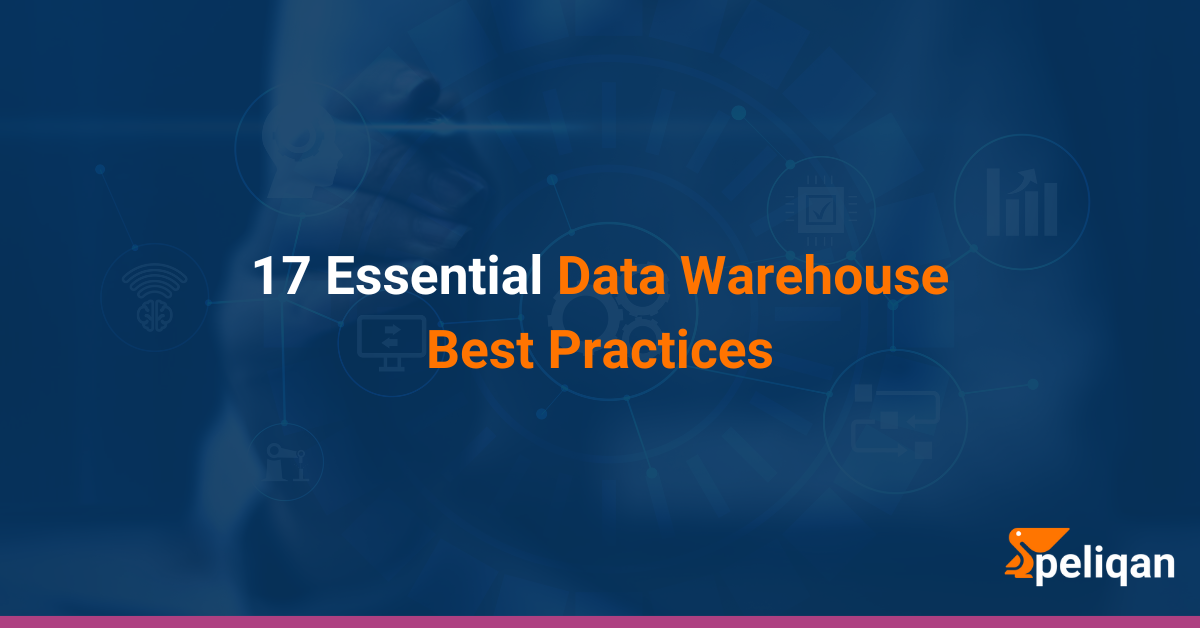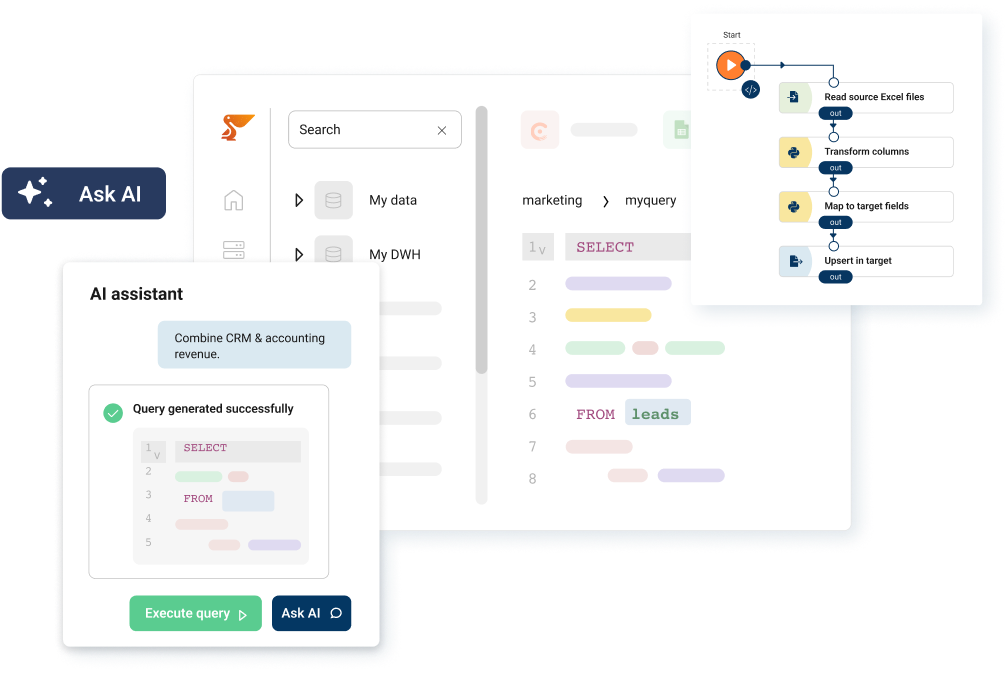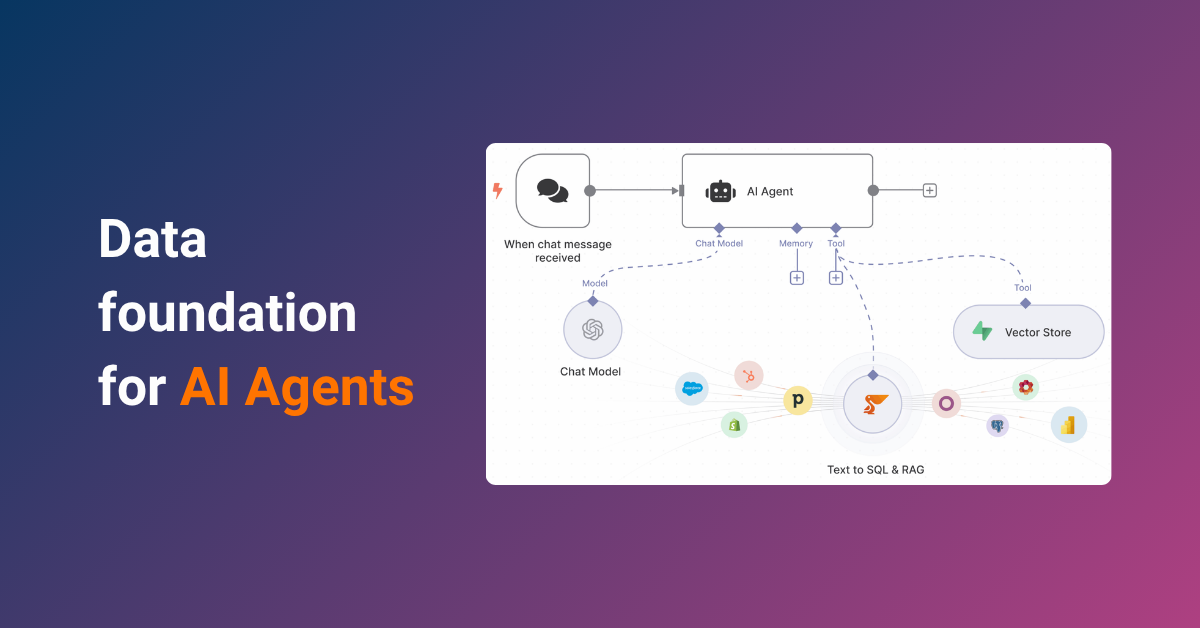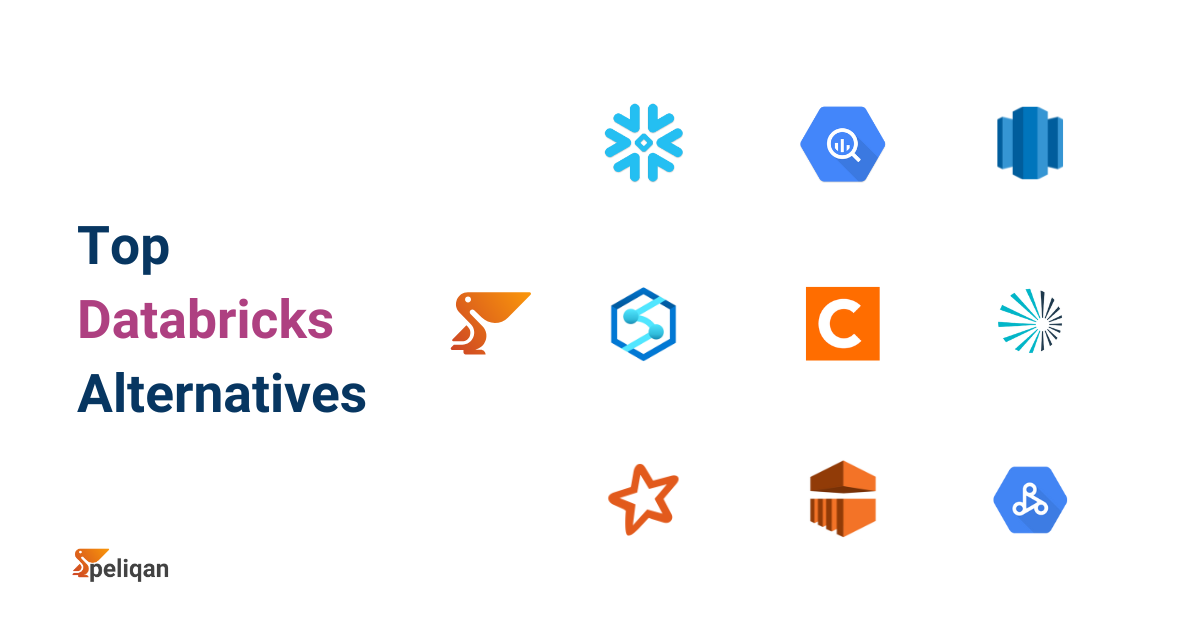A data warehouse serves as a centralized repository designed to aggregate, store, and manage large volumes of structured and unstructured data from diverse sources. By functioning as a historical database, it allows organizations to perform complex queries and analysis, facilitating better decision-making processes.
The importance of understanding and adhering to best practices in data warehousing cannot be overstated, as these practices directly influence the efficiency, reliability, and security of the data management process.
As companies increasingly rely on data-driven strategies, knowing how to effectively design, implement, and maintain a data warehouse is indispensable for achieving optimal performance and maximizing return on investment (ROI).
Through the meticulous application of best practices, organizations can ensure their data warehouses not only meet current demands but are also scalable enough to evolve with future business needs.
The Evolution of Data Warehousing
Data warehousing has come a long way since its inception in the late 1980s. Initially designed as centralized repositories for structured data from various sources, data warehouses have evolved to meet the challenges of the digital age.
- Early days: Focused on batch processing and historical analysis
- 2000s: Introduction of real-time data integration and analytics
- 2010s: Rise of big data and the emergence of cloud-based solutions
- Today: AI-driven, cloud-native platforms with advanced analytics capabilities
This evolution has been driven by the exponential growth in data volumes, the need for real-time insights, and the demand for more flexible and scalable solutions.
Key Challenges in Modern Data Warehousing
In the contemporary landscape of data warehousing, organizations face several challenges that can impede their ability to effectively manage and utilize data. Understanding these challenges is crucial for developing strategies to mitigate their impact.
- Data Integration Complexity: The diversity of data sources, including structured, semi-structured, and unstructured data, necessitates robust integration strategies to unify data effectively. This complexity can hinder timely access to information.
- Scalability Issues: As data volumes continue to increase exponentially, organizations must ensure their data warehousing solutions can scale accordingly without compromising performance or incurring excessive costs.
- Real-time Processing Demands: The rise of real-time analytics has created a need for data warehousing solutions that support continuous data ingestion and immediate query capabilities, challenging traditional batch processing paradigms.
- Data Quality and Governance: Maintaining high standards for data quality while ensuring compliance with governance frameworks is essential. Poor data quality can lead to erroneous insights, affecting decision-making processes.
- Cost Management: The investment required for advanced data warehousing technologies and the operational costs related to data storage and processing can be significant. Organizations must assess their budgets and prioritize expenditure effectively.
- Security and Privacy Concerns: With increasing regulations around data privacy, organizations must ensure that their data warehousing solutions comply with legal requirements while also protecting sensitive information from breaches and unauthorized access.
Understanding these challenges is pivotal as organizations navigate the contemporary data management landscape, especially when considering the impact and strategic implications of traditional data warehouses in comparison to modern data lakehouse architectures.
Top 17 Data Warehouse Best Practices
To navigate the complexities of modern data warehousing effectively, organizations must adopt best practices that not only enhance system performance but also facilitate seamless data integration and analytical capabilities.
Now, let’s explore the top 17 data warehouse best practices that will help you unlock the full potential of your analytics infrastructure in 2024 and beyond.
1. Define Clear Business Objectives
Before diving into the technical aspects of data warehousing, it’s crucial to identify why your organization needs a data warehouse. Align your data warehouse strategy with specific business goals, such as:
- Improving decision-making processes
- Standardizing data across the organization
- Reducing operational costs
- Enhancing customer insights
By establishing clear objectives, you’ll ensure that your data warehouse implementation stays focused on delivering tangible business value. Conduct stakeholder interviews, workshops, and surveys to gather requirements and prioritize use cases that will drive the most significant impact for your organization.
2. Choosing the Right Data Warehouse Architecture
Selecting the appropriate data warehouse architecture is fundamental to your success. Consider these options:
- On-premises solutions: Offer complete control but require significant upfront investment and ongoing maintenance.
- Cloud-based data warehouses: Provide scalability, flexibility, and cost-effectiveness, making them an increasingly popular choice.
- Hybrid approaches: Combine on-premises and cloud solutions to balance control and scalability.
Evaluate your organization’s needs, budget, and technical expertise to determine the best fit. Consider factors such as data volume, query performance requirements, security concerns, and integration with existing systems when making your decision.
3. Implement a Robust Data Governance Strategy
Data governance is essential for maintaining data quality, security, and compliance. Develop a comprehensive data governance framework that includes:
- Data quality standards and processes
- Security and access control policies
- Data retention and archiving guidelines
- Compliance with relevant regulations (e.g., GDPR, NIS2)
A strong data governance strategy will help ensure that your data warehouse remains a trusted source of information for decision-makers. Establish a data governance committee to oversee policies, procedures, and best practices.
Implement data stewardship roles to manage and maintain data quality across different domains within your organization. To support these efforts, aligning your governance framework with a broader retail data strategy can help ensure consistency, improve data-driven decision-making, and enhance operational efficiency across the business.
4. Adopt an Agile Approach to Data Warehouse Development
Rather than pursuing a “big bang” implementation, consider an agile approach to data warehousing. This iterative methodology allows you to:
- Deliver value incrementally
- Adapt to changing business requirements
- Reduce project risks
- Encourage stakeholder engagement throughout the process
By breaking your data warehouse project into smaller, manageable sprints, you can demonstrate ROI faster and maintain flexibility as your needs evolve. Use agile methodologies like Scrum or Kanban to manage your data warehouse development process, and conduct regular retrospectives to continuously improve your approach.
5. Design a Scalable Data Model
Your data model is the foundation of your data warehouse. Implement a scalable and flexible design that can accommodate future growth and changing requirements. Consider these best practices:
- Use a star or snowflake schema for optimal query performance
- Implement slowly changing dimensions to track historical changes
- Design for extensibility to easily add new data sources and attributes
A well-designed data model will support efficient querying and analysis as your data volumes and complexity increase. Regularly review and refine your data model to ensure it continues to meet evolving business needs.
6. Optimize ETL/ELT Processes
Efficient data integration is critical for maintaining an up-to-date and accurate data warehouse. Consider these best practices for your Extract, Transform, Load (ETL) or Extract, Load, Transform (ELT) processes:
- Implement Change Data Capture (CDC) for real-time data updates
- Parallelize data loading processes for improved performance
- Use incremental loading techniques to minimize processing time
- Consider ELT for cloud-based data warehouses to leverage their scalable compute resources
By optimizing your data integration processes, you’ll ensure that your data warehouse always contains the most current and relevant information. Implement monitoring and alerting for your ETL/ELT jobs to quickly identify and resolve any issues.
7. Implement Robust Data Quality Measures
High-quality data is essential for accurate analytics and decision-making. Incorporate data quality checks throughout your data warehouse pipeline:
- Validate data at the source
- Implement data cleansing and standardization processes
- Use data profiling tools to identify anomalies and inconsistencies
- Establish data quality KPIs and monitor them regularly
By maintaining high data quality standards, you’ll build trust in your data warehouse and improve the accuracy of your analytics. Consider implementing a data quality firewall to prevent low-quality data from entering your warehouse in the first place.
8. Prioritize Performance Optimization
A slow or unresponsive data warehouse can hinder user adoption and limit its value to the organization. Focus on performance optimization techniques such as:
- Implementing appropriate indexing strategies
- Using partitioning to improve query performance on large tables
- Leveraging materialized views for frequently accessed data
- Optimizing query designs and execution plans
Regular performance tuning will ensure that your data warehouse remains responsive and efficient as data volumes grow. Implement a performance monitoring solution to track query execution times, resource utilization, and user concurrency.
9. Invest in User Training and Support
A data warehouse is only valuable if users can effectively leverage its capabilities. Invest in comprehensive training and support programs:
- Provide role-based training for different user groups
- Develop user-friendly documentation and self-service resources
- Establish a dedicated support team to address user questions and issues
- Encourage knowledge sharing and best practices among users
By empowering your users, you’ll maximize the adoption and impact of your data warehouse across the organization. Consider implementing a center of excellence (COE) to promote best practices and provide ongoing support to users.
10. Implement Robust Security Measures
Data security is paramount in today’s digital landscape. Implement comprehensive security measures to protect your data warehouse:
- Use encryption for data at rest and in transit
- Implement strong authentication and access control mechanisms
- Regularly audit and monitor access to sensitive data
- Conduct periodic security assessments and penetration testing
By prioritizing security, you’ll protect your organization’s valuable data assets and maintain compliance with regulatory requirements.
11. Leverage Metadata Management
Effective metadata management is crucial for understanding and maintaining your data warehouse. Implement a robust metadata management strategy:
- Document data lineage and data transformations
- Maintain a data dictionary and business glossary
- Implement data cataloging tools for easy discovery of data assets
- Use metadata to enable self-service analytics and data governance
By leveraging metadata, you’ll improve data discoverability, enhance data governance, and enable more efficient data analysis across your organization.
12. Implement Data Archiving and Retention Policies
As your data warehouse grows, it’s essential to implement effective data archiving and retention policies:
- Define clear retention periods for different types of data
- Implement automated archiving processes
- Ensure archived data remains accessible when needed
- Comply with regulatory requirements for data retention
By implementing effective archiving and retention policies, you’ll optimize storage costs and maintain compliance while ensuring historical data remains available for long-term analysis.
13. Embrace Cloud-Native Technologies
Cloud-native technologies can significantly enhance your data warehouse capabilities:
- Leverage serverless computing for scalable, cost-effective processing
- Use containerization for portable, consistent deployments
- Implement microservices architecture for flexible, modular data pipelines
- Utilize cloud-native storage solutions for improved performance and scalability
By embracing cloud-native technologies, you’ll be able to build a more agile, scalable, and cost-effective data warehouse infrastructure.
14. Implement Data Masking and Anonymization
Protecting sensitive data is crucial, especially when working with personally identifiable information (PII) or other confidential data:
- Implement data masking techniques to obfuscate sensitive information
- Use data anonymization to remove identifying information from datasets
- Apply role-based access controls to limit exposure to sensitive data
- Regularly audit and review data masking and anonymization processes
By implementing these measures, you’ll enhance data privacy and reduce the risk of data breaches while still enabling valuable analytics on sensitive datasets.
15. Continuously Monitor and Evolve Your Data Warehouse
Data warehousing is an ongoing process, not a one-time project. Implement continuous monitoring and improvement practices:
- Use monitoring tools to track system performance and usage patterns
- Regularly review and optimize data models and ETL/ELT processes
- Stay informed about new technologies and best practices in the field
- Solicit feedback from users and stakeholders to identify areas for improvement
By treating your data warehouse as a living system, you’ll ensure that it continues to meet the evolving needs of your organization.
16. Implement Data Visualization and Self-Service Analytics
Empower users to derive insights from your data warehouse:
- Integrate user-friendly data visualization tools
- Provide self-service analytics capabilities for non-technical users
- Create dashboards and reports for common business questions
- Encourage data exploration and discovery
By making data accessible and actionable, you’ll increase the value and adoption of your data warehouse across the organization.
17. Develop a Disaster Recovery and Business Continuity Plan
Ensure the resilience of your data warehouse:
- Implement regular backup and recovery procedures
- Develop and test a disaster recovery plan
- Set up high availability and failover mechanisms
- Establish clear RPO (Recovery Point Objective) and RTO (Recovery Time Objective) targets
A robust disaster recovery and business continuity plan will minimize downtime and data loss in case of unexpected events.
By incorporating these strategies, organizations can build a strong foundation for their data warehousing initiatives, ensuring they not only meet current demands but are also well-prepared for future challenges. Below is a comprehensive Data Warehouse Implementation Checklist to guide you through the essential steps and considerations for successful deployment.
Data Warehouse Implementation Checklist
Implementing a data warehouse requires meticulous attention to detail and a structured approach; therefore, having a comprehensive checklist can streamline the process and ensure that no critical elements are overlooked. To help you get started with implementing these best practices, here’s a handy checklist:
| Phase | Task | Explanation |
|---|---|---|
| Planning | Define business objectives | Identify specific goals and use cases for the data warehouse |
| Choose data warehouse architecture | Select on-premises, cloud, or hybrid solution based on needs | |
| Develop data governance strategy | Create policies for data quality, security, and compliance | |
| Design | Create scalable data model | Design flexible schema to accommodate future growth |
| Design ETL/ELT processes | Plan data integration workflows and transformations | |
| Plan security measures | Outline encryption, access control, and auditing procedures | |
| Implementation | Set up data warehouse infrastructure | Deploy chosen architecture and configure systems |
| Implement ETL/ELT pipelines | Build and test data integration processes | |
| Configure security controls | Apply security measures as per design | |
| Establish data quality measures | Implement data validation and cleansing procedures | |
| Testing | Perform functionality testing | Verify all warehouse components work as expected |
| Conduct performance testing | Evaluate query performance and system responsiveness | |
| Validate data quality | Ensure data accuracy and consistency | |
| Deployment | Train users | Educate stakeholders on warehouse usage and best practices |
| Go live | Launch the data warehouse for production use | |
| Monitor and optimize | Continuously track performance and make improvements |
By following this comprehensive checklist, organizations can systematically approach their data warehouse implementation process. This ensures that each critical phase, from initial planning to final deployment, is executed with precision and aligns seamlessly with overarching business objectives.
Implementing a data warehouse is a significant investment, and adhering to a structured checklist can help teams identify potential challenges, allocate resources effectively, and maintain clear communication throughout the project. Ultimately, this careful planning enhances the likelihood of achieving a robust data infrastructure that supports informed decision-making and drives business growth.
Conclusion
In conclusion, implementing a robust data warehouse requires a systematic approach that encompasses planning, design, implementation, testing, and continuous improvement. Each phase presents unique challenges that can be tackled with best practices and frameworks to optimize data management and accessibility. Leveraging advanced technologies and strategies not only enhances the efficiency of data operations but also ensures compliance with regulatory standards.
As you navigate this complex landscape, consider solutions like Peliqan, which offer sophisticated data warehousing capabilities. Peliqan provides an integrated platform designed for seamless data management, enabling organizations to unlock valuable insights and foster data-driven decision-making.









